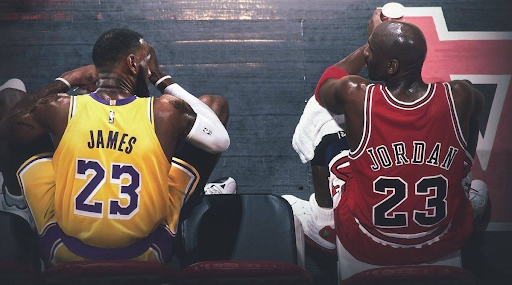Scottie Pippen’s reflection on Michael Jordan’s potential in today’s NBA provides an interesting perspective on how the game has evolved. He points out that in Michael’s era, basketball was defined by physicality, with defenses being much more aggressive and players often having to fight through tougher contact. With games often seeing scores in the range of 85-90 points, it was a much slower, grind-it-out style of play compared to the high-paced, high-scoring matches we witness today. The physical nature of that time, especially with hand-checking and tight defensive schemes, made it a different challenge for players like Michael to thrive offensively.

In today’s game, with the increased freedom of movement and a shift towards perimeter shooting, we’ve seen an increase in scoring. Games frequently exceed 130 or even 140 points, which is a stark contrast to what was normal in the 80s and 90s. The rules have adapted, prioritizing offense over defense, with a more lenient approach to physical play. This change has allowed for a more free-flowing game where athleticism, quick ball movement, and three-point shooting reign supreme. Scottie’s comment that Michael would have thrived in this modern era isn’t just about his individual talent, but how the system would have better suited his style of play.
Michael Jordan was already one of the most dominant players of all time, but in today’s game, with fewer physical restrictions, he could have taken his game to new heights. The modern NBA is more about pace and space, with teams focusing on maximizing efficient scoring opportunities. Michael’s exceptional skills—his ability to drive, create off the dribble, and his mid-range game—would have been even more deadly in an era that prioritizes creating mismatches and finding open shots. Moreover, with the increased emphasis on fast breaks and transition offense, Michael’s speed and agility would have made him even more of a nightmare for opposing defenses.

Another factor to consider is the emphasis on three-point shooting that has become central to today’s game. While Michael was never known as a prolific three-point shooter during his prime, his ability to adjust and expand his game was evident in his later years, particularly during his time with the Washington Wizards. In today’s NBA, he could have developed his range to match the modern style, making him even more versatile. The combination of his elite scoring in the paint and newfound three-point threat would have made him an unstoppable force.
Finally, it’s important to acknowledge that while the game may be less physical, it’s also faster and more complex. The talent pool has grown, with more players honing their skills from a younger age, making for a more competitive league. However, Michael Jordan’s basketball IQ and mental toughness would have transcended these changes. His work ethic, leadership, and unmatched competitive drive would have allowed him to adapt and remain one of the best, proving that even in a different era, his greatness would still shine. Scottie’s insight into how the game has shifted only highlights how Michael’s legendary career might have been amplified in the modern game.